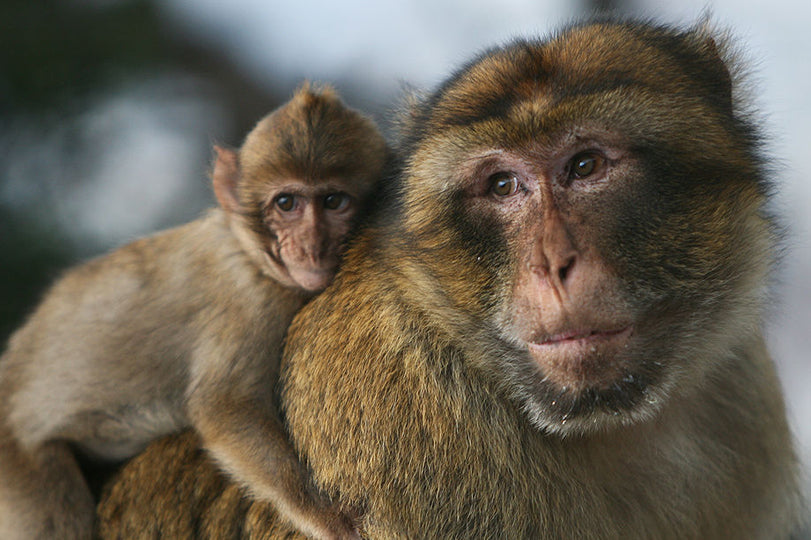The European and North African ancestry of a unique monkey was well known to the ancients. Now, we barely understand that Gibraltar and the Atlas Mountains of Morocco have simply remnant communities, following the last Ice Age and numerous human interactions. Macaca sylvanus is threatened by loss of habitat, tourist interactions, pet traders, and innumerable problems that face such a tiny population, except in Gibraltar, where the ape
is growing in population.
Liz A. D. Campbell of the Moroccan Primate Conservation Foundation and her colleagues have prepared a significant paper on how strategic both upper and lower cedar branches are for the monkeys when winter snows fall. Read it at the RSOS site. At around 1800m(5905 ft), cedar/holm oak communities are the present habitat for the animals in Ifrane National Park, with legal and illegal logging creating huge problems for survival. This study was to characterise the macaque sleeping areas, found solely in the cedar trees. The microhabitat must contribute to winter energy conservation, so any timber workings are likely to reduce survival levels. The cedar forest offers wind protection, dense overhead vegetation and large branches as typified in the illustration, allowing social huddles for heat conservation.
Logging advice is unlikely to be taken by illegal operators, but a shift in local opinion could perhaps see some movement on these entrepreneurial criminals - or the shepherds who remove branches for feeding livestock! At this altitude, snow cover lasts from December till the end of March.
The preferences for 2 large macaque groups were largely to sleep near valley bottoms in
forest with more than 200/250 trees per hectare and trees more than 60cm in diameter.
Wind exposure was certainly reduced in such locations, while convection of warm
air was prevented by larger numbers of upper branches in the sleeping sites.
Sleeping sites and sleeping trees were repeatedly used, sometimes causing a dispute
between groups. This indicates great value is placed on a good site.
Predation and human interference are further influences on macaque distribution.
The great losses sustained during harsh winters indicates however that these dwindling few populations must be conserved with increased effort in tree preservation, especially in the loss of this limited native vegetation through any kind of logging. Sad losses have happened both in circumstances such as these and in many other habitats around the planet where precious species have been completely lost to the greed for those few remaining trees.










